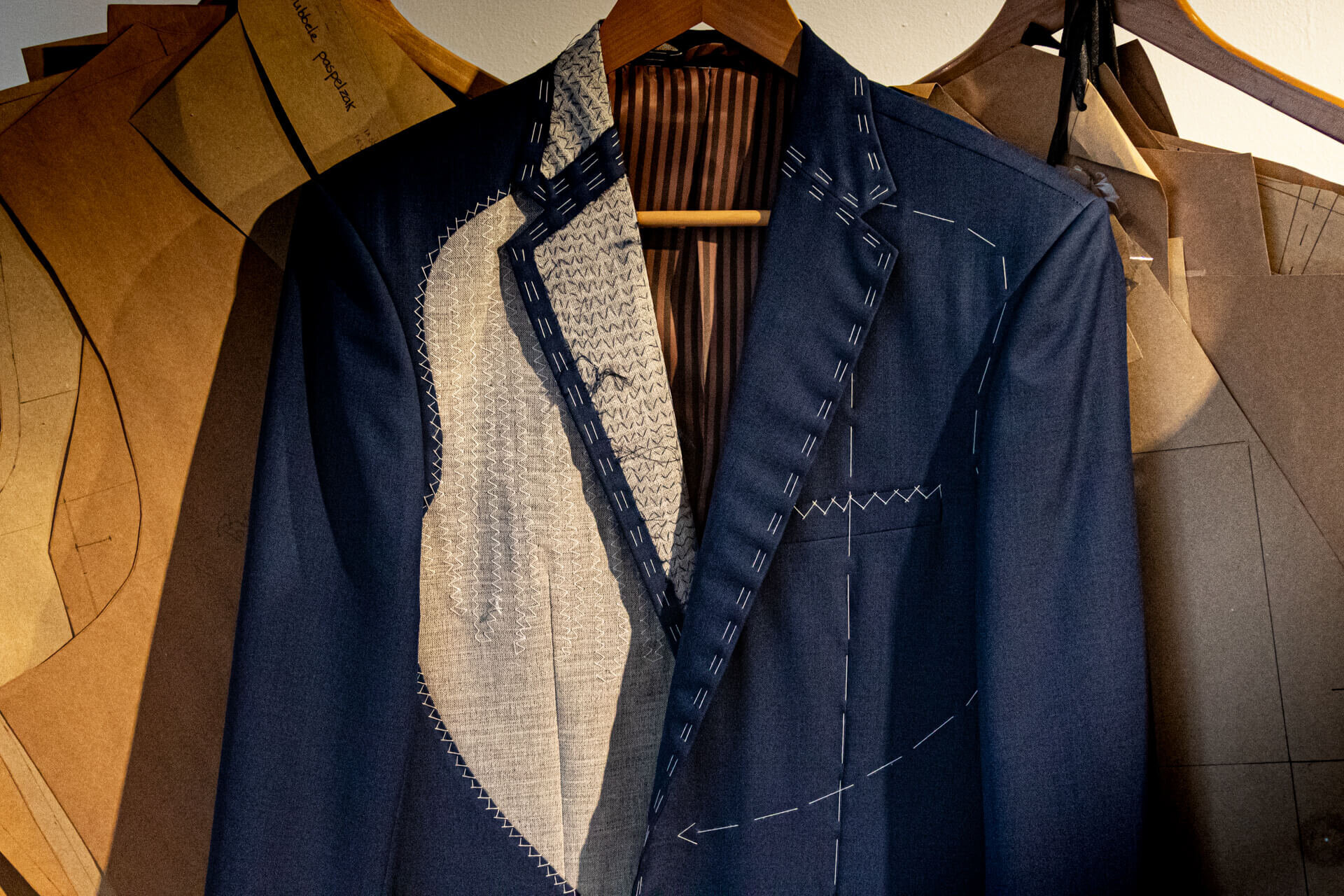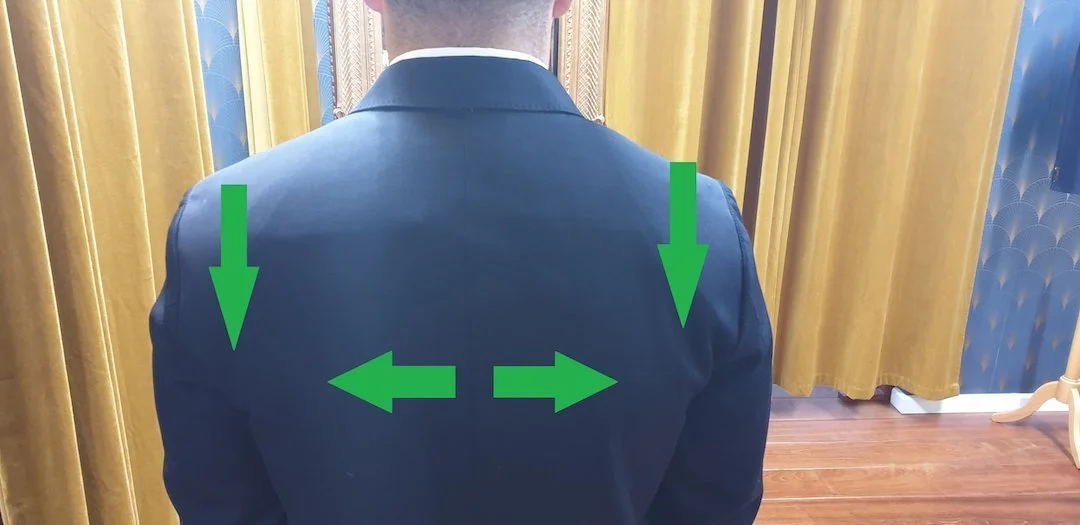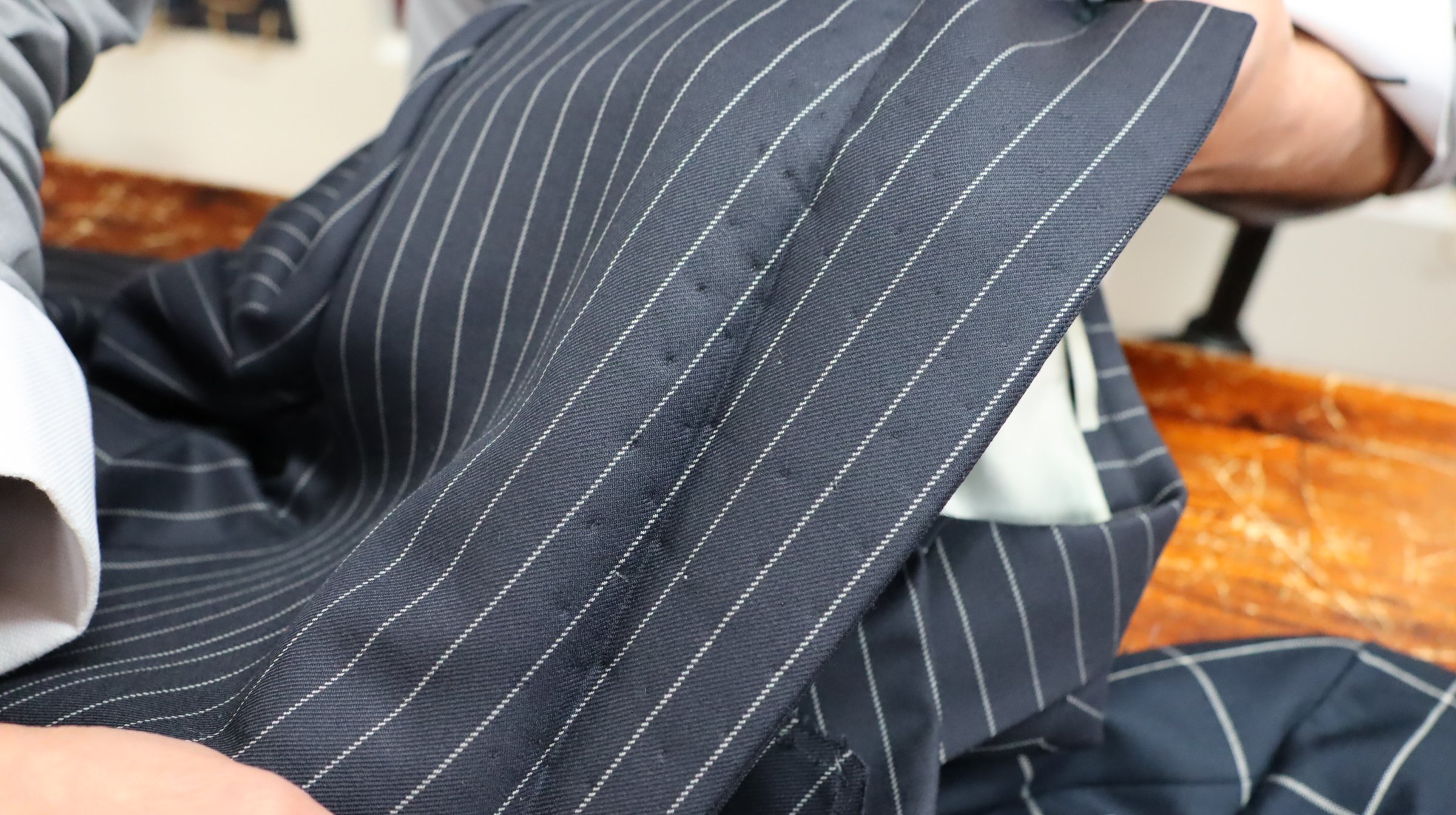Lees dit artikel in het Nederlands
Full Canvas - Half Canvas - Unlined - Fused - Video (Dutch)
Full Canvas, Half Canvas, Unlined and Fused. The construction and make of your suit
There are several construction methods to make a suit, jacket or overcoat. In order to create added value to your suits and jackets, I would like to address the function of canvas in the construction of a suit or jacket. The use and the correct processing of canvas makes the difference in comfort and appearance.
What is canvas, and how does this relate to the construction of a suit?
Canvas is often a mixture of wool, cotton and primarily, camel and horse hair. The benefit of animal hair is that they can be formed by using moisture, heat and pressure. Think of the way a lady styles her hair by using a heated curling iron in order to give shape to her haircut. Next to that, camel and horse hairs are light weight and strong. The hairs of the mane are the most soft while the hairs of the tail ore more stiff and rugged.
The real connoisseur even orders the canvas bespoke, tuned to the specific garment, the fabric the fit and the drape. Several types of fibres are woven in combination with wool and cotton to create different canvasses with different qualities. This in combination with the hair canvas forms the foundation for the construction of your suit.
The woollen canvas makes the most important layer while the hair canvas or rolled hairs bring shape and structure to the breast and shoulder. So has every tailor his tricks of the trade to add his own signature to the garments he makes. The next step is to cover the layer with felt, domette or flannel in order to keep the rugged hairs from chafing.
Full Canvas Jacket construction
Traditionally, men’s suits were constructed with a layer of horsehair canvas underneath the wool fabric shell. This canvas holds the shape of the suit and keeps it from sagging or deforming, much like the foundation of a house keeps it upright. The canvas is cut to the jacket’s shape, then the wool is stitched to the canvas. Over time, as you wear the jacket, the canvas conforms to your body’s shape, creating an excellent fit.
The canvas lining allows the suit fabric to drape naturally, allowing a clean, well put-together look. It takes years of training and additional hours of handwork for a tailor to be able to craft this the correct way.
Half Canvas Jacket construction
Between the two extremes (fused and full canvas) lies a compromise – the half-canvassed jacket. Half-canvassed jackets have canvas material running only through the chest and lapels of the coat. Past that point, the jacket is fused.
Half-canvassed jackets have several benefits. First, they generally have a lower price than a similar fully canvassed jacket. Less handcraft means a lower overall cost to you. And because the top half of the jacket is not fused you’ll not run into any bubbling problems as you might in a fused jacket. This adds to the lifespan of the garment. Finally, the canvassing provides the proper base for the jacket to drape naturally across your chest, rather than appearing stiff and lifeless as many fused jackets do.
Unlined Jacket construction
When your suits aren't just for business and formal occasions then having them tailored Unlined or Unstructured is a good option. It gives the wearer the most natural look and freedom of personal expression.
By removing the interior lining, shoulder pads, and the canvassing, the jacket wears more like a shirt than a suit coat. This allows for more movement - comfort, a more casual appearance, and a more natural silhouette for the wearer - all of which help bringing the jacket down to the less formal level of the wardrobe. More often than not it is seen on lighter, summer-weight fabrics.
Part of it because lighter weights of wool and materials like cotton and linen are more prone to wrinkle in the first place, another reason is that by removing the lining it allows the jacket to wear much cooler. Natural fibres breath but this is obstructed by the satin lining, even a light-weight jacket with a full-canvas construction wears much warmer in the summer.
Fused Jacket construction
Many suit manufacturers no longer use a canvas interlining in their jackets. Rather, a fusible interlining is glued to the wool shell of the suit. And while this does an adequate job of keeping a jacket’s shape, it often creates an unnatural stiffness in the jacket, making a fused jacket appear lifeless compared to a similar canvassed coat.
What is sometimes problematic with fused jackets is the fact that the glue degrades over time, or may come unstuck during the dry-cleaning/pressing process. Where the wool detaches from the fused backing, the fabric ripples around the chest and lapels, a phenomenon known as “bubbling.”
Differences: In the full canvas Jacket, you can see how the jacket is composed entirely of cloth and horsehair canvas. The fabric is stitched directly to the canvas. In a half-canvassed garment, fusible extends the entire length of the coat. However, the garment is stitched to the canvas material, assisting in the proper shaping and providing life to the coat. In the fused jacket all the way to the right, the fusible interlining is glued the entire length of the coat.












